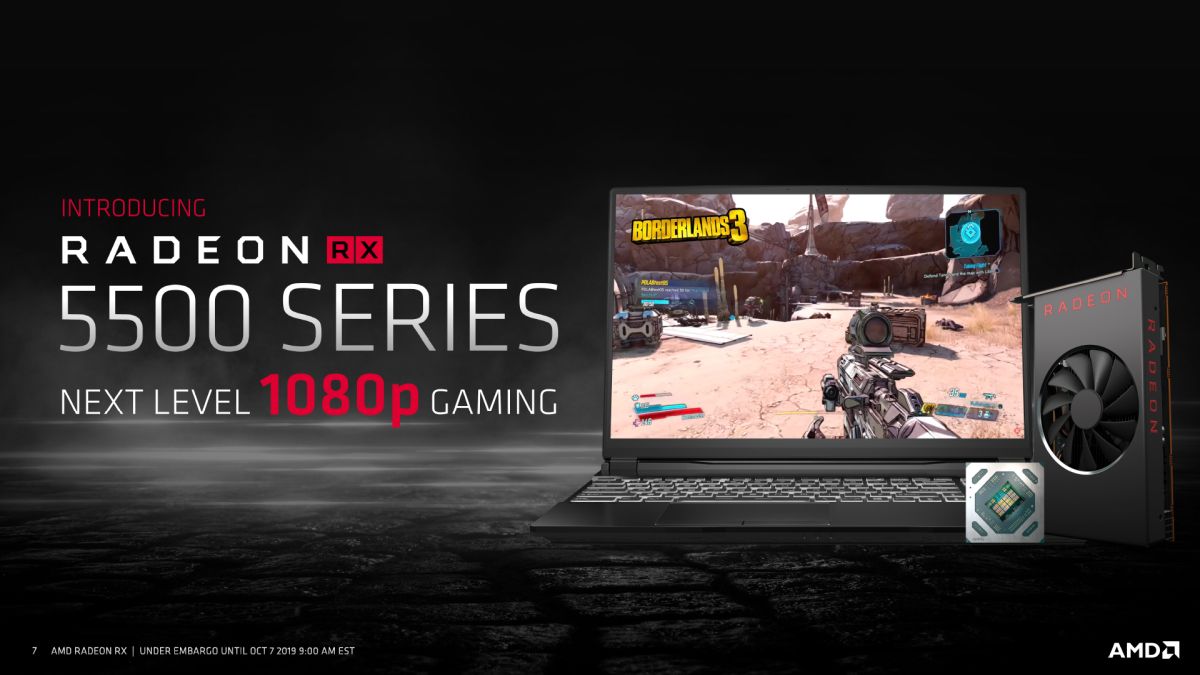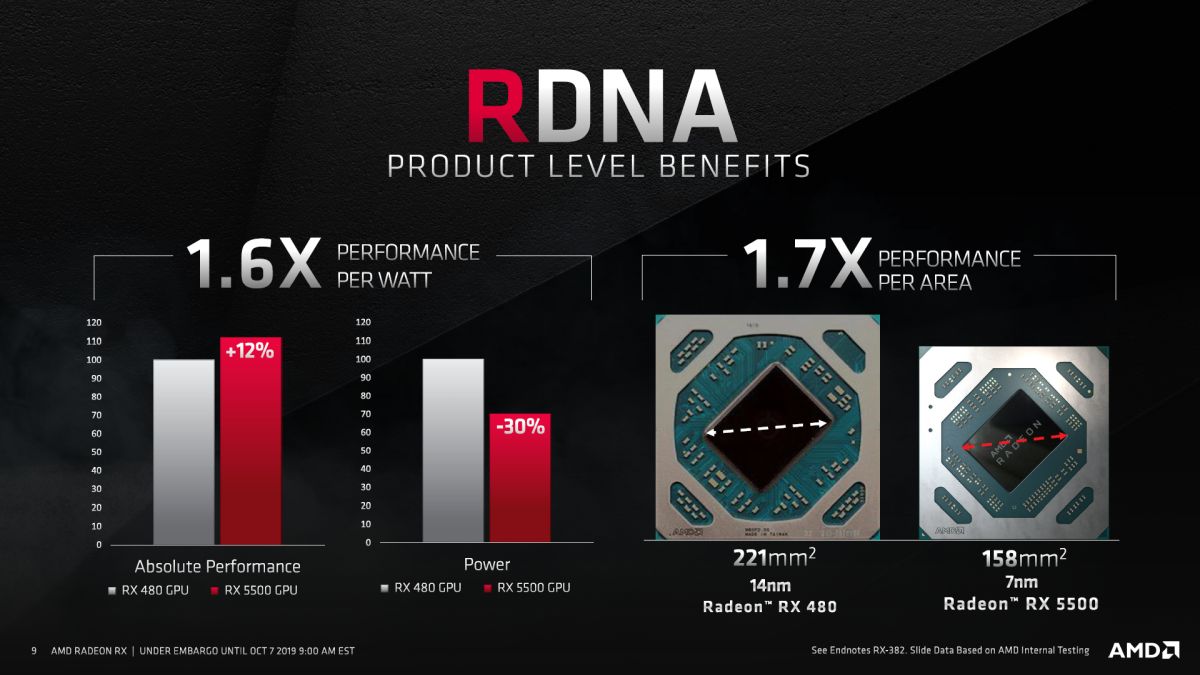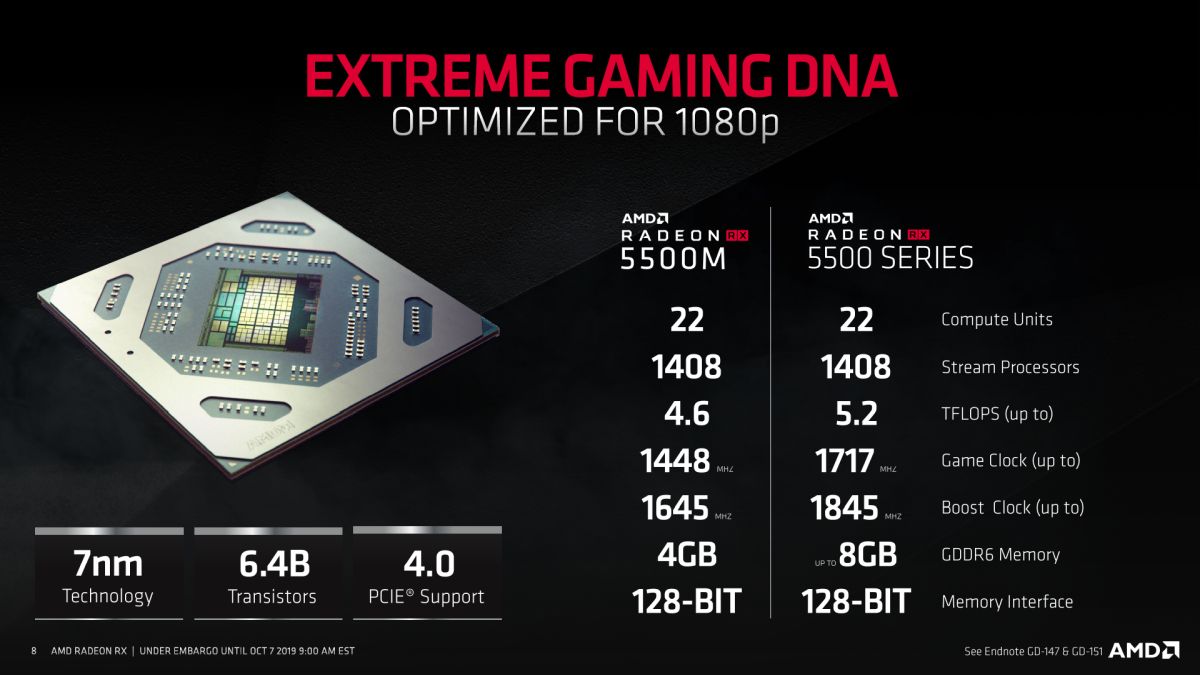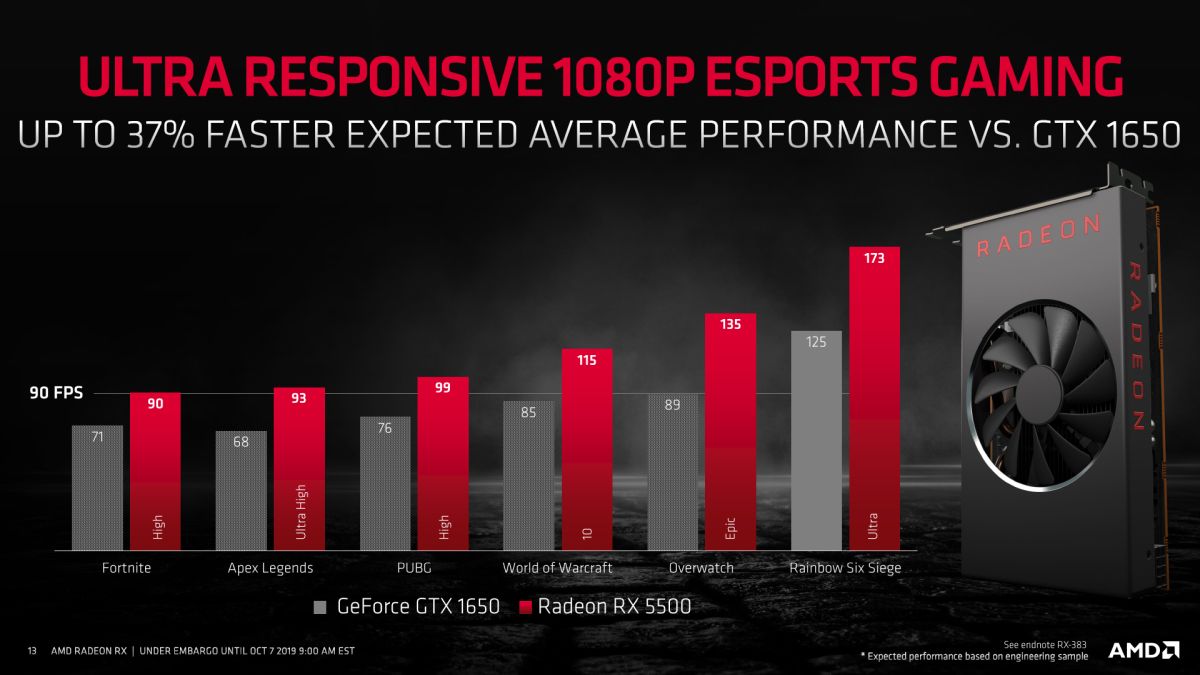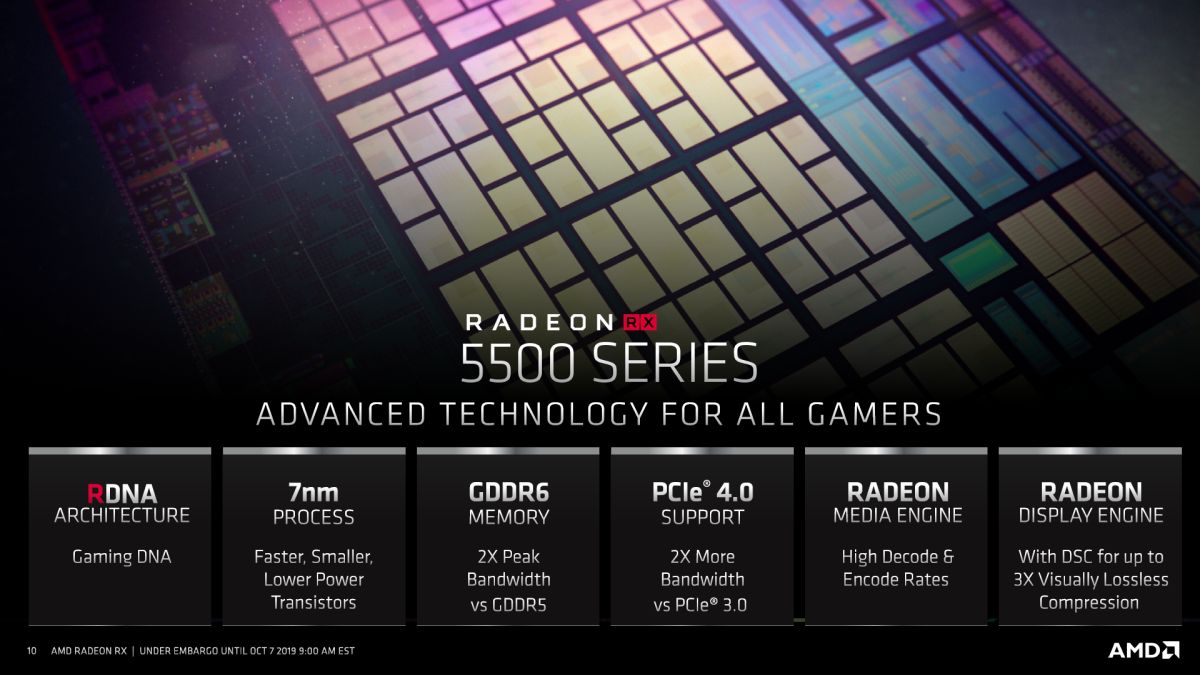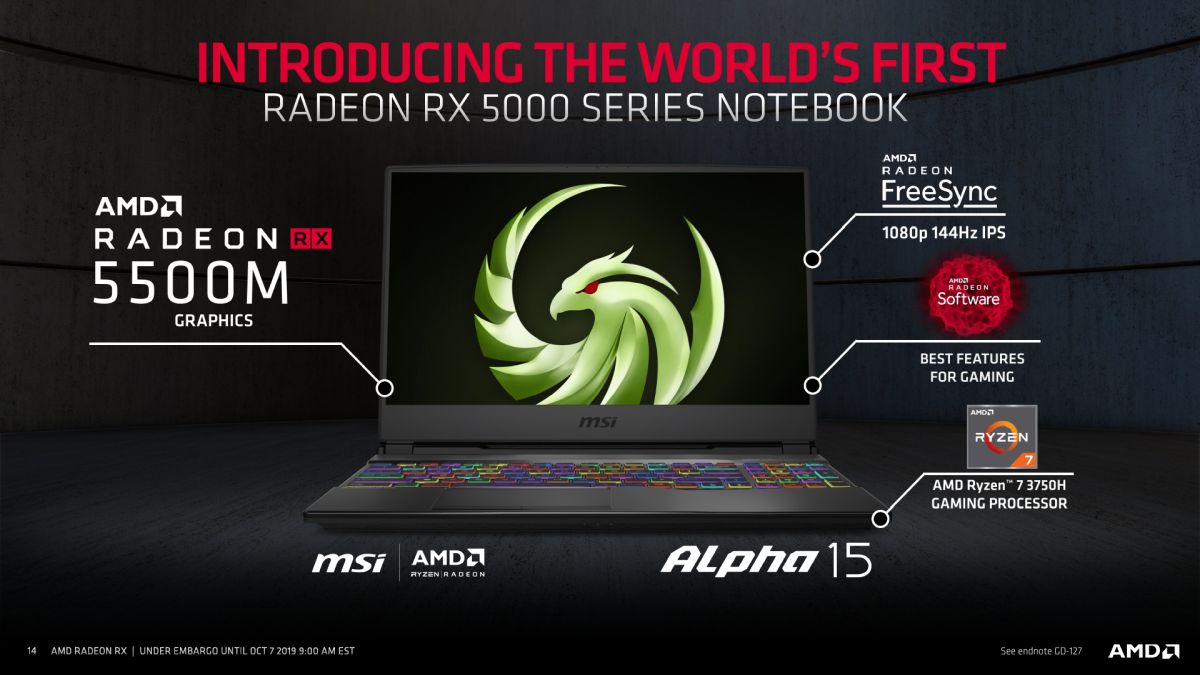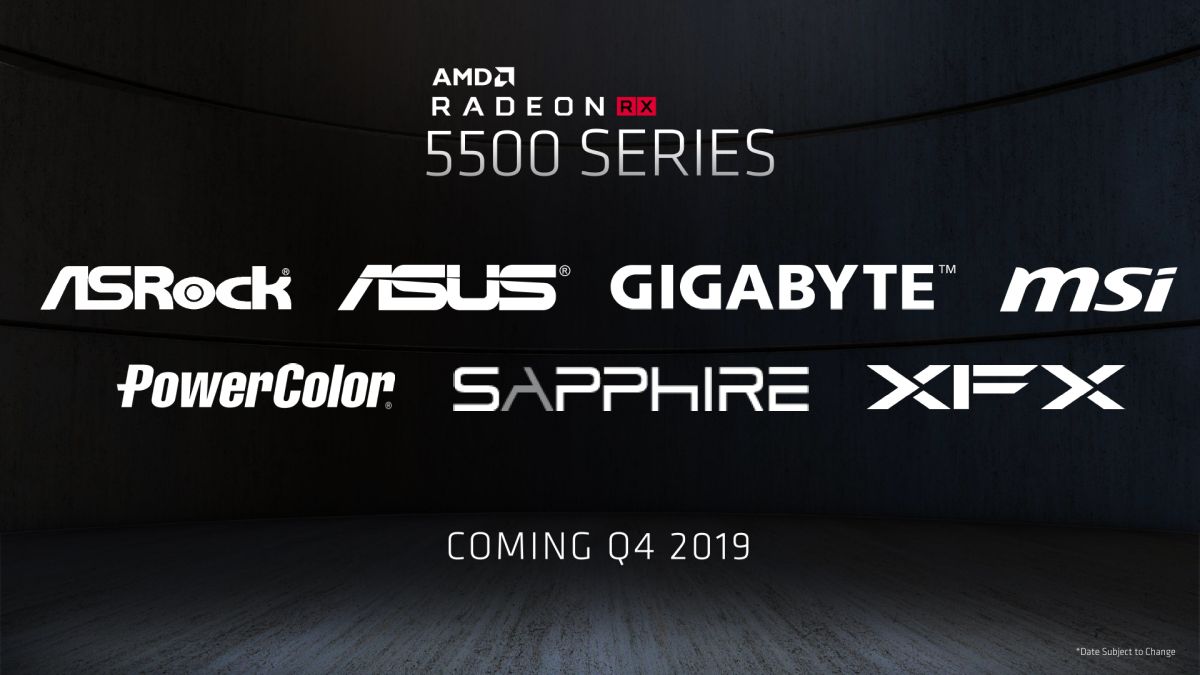The RX 5500 series can be divided into two categories; a desktop lineup that will undoubtedly be expanded with different SKUs over time, and the RX 5500M mobile GPU that AMD says will be (for now, anyways) the only mobile GPU solution for notebooks.
Regardless of the configuration, both GPUs are manufactured based on the same 7nm die lithography that house 6.4 billion transistors. And yes, because it is based on the RDNA architecture, both GPUs support PCIe 4.0. Thanks to the RDNA architecture, the GPU die size for both the desktop and mobile version of the RX 5500 series are smaller than AMD’s 14nm Polaris GPU, but has approximately 1.6x more performance per watt.
Regarding general specifications, both the RX 5500 series and RX 5500M are equipped with 22 Compute Units, 1408 Stream Processor, have between 4.6 and 5.2 TFLOPs of computing performance, and run on a 128-bit memory interface. Memory-wise, the desktop RX 5500 series will be packing up to 8GB GDDR6 memory, with a 1717MHz base clock and 1845MHz boost clock. For the RX 5500M, the GPU will be available in a single 4GB GDDR6 configuration and have a 1448MHz base and 1645MHz boost clock. Regardless of the configurations, both have a memory configuration running at a 14Mbps frequency.
Like the RX 5700 series, the RX 5500 series also receives all the other benefits of AMD’s Radeon RX technology, including Radeon Media Engine, the Radeon Display Engine, Radeon Anti-Lag, as well as access to FidelityFX. Oh, and Radeon FreeSync, naturally.
Unlike the RX 5700 Series, however, the RX 5500 series also marks the first entry of AMD’s Navi and RDA architecture into the mobile GPU realm. To that end, the GPU maker is collaborating with its AiB partner, MSI, to make the Alpha 15 gaming notebook. The notebook will be MSI’s first AMD-only gaming notebook featuring the RX 5500M GPU, AMD’s Ryzen 7-3750H CPU, and a Full HD 144Hz IPS display with support for Radeon FreeSync. AMD says that the desktop RX 5500 series will be hitting store shelves sometime in the fourth quarter of 2019, which isn’t that long. Further, the brand will not be releasing reference design cards, and will instead allow its AiB partners to use their own custom-cooling designs for the new GPU.
In addition, AMD is also working together with branded partners such as Lenovo, HP, and Acer to ship out its desktop GPU to the masses via their pre-built desktop systems.
